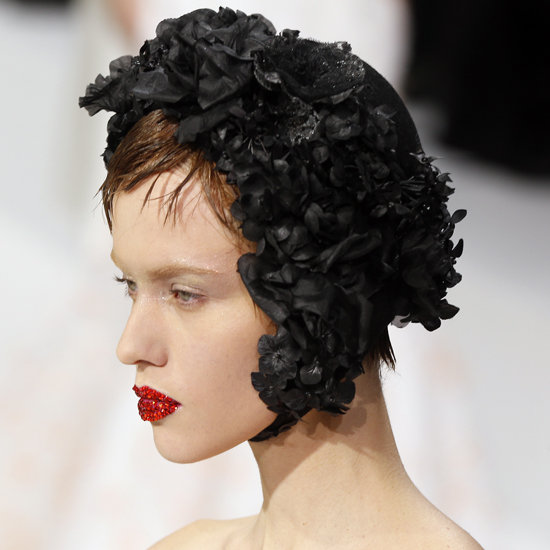I interviewed her at the beginning of the year - or perhaps it was the end of last year - for the February issue of Vogue Russia, and she talked me through the influences behind the collection, which is basically all about being a really cool teenager, and in love, and hanging out in some lane in Dublin kissing boys, while also being quite sophisticated, At least, that is what I took away from it. Oh, and she's also really really nice.
And it made me remember one of Katie Grand's old editor's letters, back when she was at the helm of POP, which opened with the line "I was a great teenager." And then it went on to say something like "you can work hard, and one day you might be too rich, and you might be too thin, but whatever you do, you can never be too young again."
Well, I wasn't a great teenager, at all. And I think that one of the reasons that I love Simone Rocha's collection so much is that I feel that it gives me a second shot at it - even though I've got a mortgage and two children. And this time, I would be really well dressed (in Simone Rocha) and not carrying puppy fat! (Well, I'm not slim yet, but Malcolm Coombes the amazing dancing/ boxing trainer is getting me there, and I have faith that I will be whip thin by the time the sun comes out. Especially if I continue to spend my evenings sewing like the incredibly uncool thirty year old that I am, rather than eating chocolate. Of course, if I was out dancing, like I was when I was younger, well, I wouldn't need Malcolm.)
But in the mean time, not wearing Simone Rocha, and with a body that is not yet entirely lithe and pre-children-esque, I'm being made incredibly happy by two flouro-esque cuffs that I picked up from the post office this morning, designed by my friend Bettina von Sachsen Weimar.
I've got an orange one and a purple one, and I'm wearing them both together on the wrist that doesn't host the flouro pink Toy Watch, and they look amazing. The little gold charm things are all detachable, and I've just got stars and crowns on mine because I'm not really a shooting kind of person though Bettina is which is why there are cartridges and wild boar too. (She's German. They have wild boar there. She's also a princess, hence the crowns. And I love a crown. It's one of the reasons that I dress my children in Marie Chantal.)
And they also make me feel sort of teenagery again, because there's a hint of the friendship bracelet about them, insofar as Bettina is my friend, and I love them so much that I want to give them to all my other friends, and make them as happy as I am.
And I'm getting so carried away by all of this that I'm seriously considering having a couple of flouro pink highlights put in my hair for the summer (once I'm thin.) But perhaps that is going too far. My husband would be horrified. Because, as mentioned earlier, I'm not actually a teenager. So I think, if I am going to do flouro this summer, I need to remember that Simone Rocha's collection was sophisticated as well as young. And then look at Spring 2013 Atelier Versace, which had some properly grown-up flouro:
Bettina's bracelets are sophisticated though - knowing her, they'd have to be - Bettina used to wear Hermes scarves for tea when we were nineteen, and her cuffs share her wrist with a Cartier Tank Francaise, rather than a Toy Watch. So here are some more of her designs - these ones are wrap bracelets - just to tempt you:
Bettina's bracelets can be found at www.bvs-design.com






































